Electronic drums were once a source of derision for many a percussionist, but the amazing leaps made over the past 20 years have turned them into a core component of professional music. Drum modules can be the key piece of equipment that can get you recording music, and they can also open up avenues of live performance that don’t exist otherwise.
For anyone unaware, you can catch the basics of electronic utility in the following video:
Since you don’t have time to travel the country solely in search of the perfect module, I went ahead and found it for you. It’s the Alesis Forge. Some of the more experienced readers might be surprised or even upset with this proclamation, but if you follow my logic, I’m confident you’ll come to my line of thinking.

Credit: inMusicBrands, LLC
Top Pick: Alesis Forge
The Forge has everything you need: MIDI expandability, SD recording, thousands of preloaded sounds and extra sounds. It has better fine tuning, sound options, ease of use, and sound quality than any competitor within two price tiers.
I’d like to think that some of you have a good feel for who I am as a percussionist and product reviewer by now, but I have to keep first-timers in mind. Here’s a quick synopsis of my experience. I am a classically trained percussionist and have been playing and recording for more than 20 years. As a product reviewer, I combine my personal experience with the opinions of industry experts.
I also sample large supplies of user reviews to see how any of the products in question fair with common users. For this particular session, I compared two dozen different drum modules in order to find the best all-around option for beginners and pros alike.
It’s worth mentioning that I specifically excluded modules marketed expressly to professional studios. First, I couldn’t get my hands on most of them in order to form an opinion. Secondly, I assume that they do not fall into the needs of the majority of my readers. So, with all of that in mind, here is how I came to determine the best electronic drum modules on the market today.
Comparing Features
Since drum modules are just the electronic components and not the things you actually hit, comparing them involves an entirely different point of view from most of my other reviews. While responsiveness and sound quality are impacted by the module, it’s a more complicated relationship, so that is taken into account.
With that in mind, the virtues I find most valuable are variety of sound, usability, connectivity/compatibility, recording tools and practicality.
Variety of Sound
As a metric, the value in sound variety depends on why you want an electronic drum kit. If you are looking for a portable and quiet practice option, then sound options matter a lot less. Then again, a practice pad set up is probably a better way to go. If you want the module for recording sessions, then you need every sound under the sun, and at pristine quality.
If you plan to use your set in performances, then you might be able to sacrifice a bit of variety for other forms of convenience. Overall, I think being able to choose from every instrument in existence is one of the most valuable aspects of electronic drums, so I weighed this category pretty heavily, as it is important for recording and performance.
Usability
This concept comes in two forms: ease of use and range of use. For an older veteran of music like me, ease of use is of extreme importance. I often run out of patience when dealing with clunky or inefficient menu screens. That said, I can find myself tolerating those sins if the module can do everything I need it to. How much control do I get over each instrument sound? How is the equalizer? Can I control reverb?
Ultimately, the amount of control a module provides is compared to how easy it is to use, and the give and take is what I weigh. Since I made my comparisons on five metrics, this accounting for about 20 percent of my score shows that it is very important.
Connectivity and Compatibility
First, let’s discuss the trinity of connectivity. Any module that can’t handle MIDI and USB or SD is just not worth your time, For recording and live playing, these formats are essential. If you want to expand your kit, you need MIDI, and if you want anything you play to last, you need to be able to connect to a computer. For this, USB and SD are pretty interchangeable, but at least one has to be present.
Bonus points are easy to score is a module can work with a wider range of pads and kits, but it’s less important. This metric was worth roughly 30 percent of each module’s score, and it is, in fact, the most important measure in this ranking.
Recording Tools
We just talked about how important it is for a module to be able to record. Connectivity is a big part of that, but you also want useful controls on the module itself. Devices that can easily loop and save patterns for later use or immediate playback are infinitely more useful, and honestly, you have to go extremely low-end to lose the most basic recording functions.
That’s exactly why the modules that have the easiest and most useful means of recording, looping, and playback scored much better in my reviews. This is another metric that sits at about 20 percent of the overall score.
Practicality
This feels like an awkward metric, but ultimately it’s important. Can you feasibly use your module for its intended purpose? This really matters, and the answer for a lot of modules is a resounding no. There are huge differences in functions that suit recording vs live performance, but for the most part, if it works well live, it works well in the studio. Some studio modules are just too bulky to move around for a bunch of gigs, but none of them made the list for other reasons.
Unless you are building a professional recording studio, you’re better off spending the huge money it takes to get those modules on real instruments. So, practicality is a metric that weeded out modules that are difficult to move, don’t adjust well on the fly, can’t accommodate a range of venues or recording spaces or just generally aren’t practical. This metric accounted for the final 10 percent of my scale.
Sound Quality
Anyone who has read any of my reviews might be shocked by this next part. I did not rank sound quality when comparing modules. This sounds counter-intuitive, but my tests mostly revealed that modules didn’t achieve realistic sound until they far exceeded the several thousand dollar mark.
As a sound purist, I think that with extremely few niche exceptions, that kind of money is better spent on quality instruments. They’ll still outshine the sound quality of any module I’ve been able to try, and it saves money at the same time. Electronic modules have their place in the world, and I value mine as precious, but they are not the pinnacle of good sound. For that reason, I did loosely consider sound quality per dollar, but ultimately it was a small metric this time around.
It’s also important to note how much electronic sound quality has improved in recent years. While I’ll pick on these devices, even low-end modules have high-quality sound by general comparison. You’ll only notice the big differences after years of ear training, and when you hit that point, electronic options always pale in comparison.
The Competition
After hours of testing and research, here's the final competition.
| Instrument | Rating | Current Pricing |
|---|---|---|
Alesis Forge | This is the all-around beast of electronic drumming |  |
Roland TD | Can tune each instrument by adjusting balance, reverb and a number of other factors |  |
Alesis SamplePad Pro | Remarkably affordable, and it easily combines an excellent module with onboard playing pads |  |
Our Recommendation: Alesis Forge

Credit: inMusicBrands, LLC
View on Amazon
Current Amazon.com price:
Boy, there are going to be some passionate dissenters this time around, but hear me out. The Forge is not the best electronic module on the market. It is, however, the best-valued module you can find. This module is used in Alesis kits ranging from $300 to over $1000, and you have to get well above $1000 modules from the competitors before they can beat the Forge. Even then, until you break $10,000 the differences aren’t extreme.
The Forge has everything you need: MIDI expandability, SD recording, thousands of preloaded sounds and thousands more of downloadable extra sounds. It’s easy to use recording, and with quality pads, it can handle live performance. It doesn’t really set itself apart with innovation, as these features are available on all of the competitors.
What makes the Forge the best is that it has more fine tuning, sound options, ease of use, sound quality and every other metric packed into a single module than any competitor within two price tiers. This is the all-around beast of electronic drumming, and you absolutely cannot find better value anywhere.
Runner-Up: Roland TD

Credit: Roland Corporation
View on Amazon
Current Amazon.com price:
The Roland TD-series comes in as an undeniable runner-up. Most of my dissenters will be screaming about the quality of the TD modules, and they aren’t wrong. The series ranges in price, and quality really does increase with cost. Still, until you spend four times as much on your Roland as your Alesis, the Alesis is flat out winning in performance, so I stand by my ranking.
That said, Roland does amazing things with their modules. Even at the lowest end, you get refined controls that are downright elegant in simplicity. Besides choosing from thousands of available sounds, you can tune each instrument by adjusting balance, reverb and a number of other factors.
These modules are also excellent for recording and playback, making them a top choice for anyone who wants to use them as the “drummer” in a live performance. You can’t go wrong with anything in the TD series, and it can mostly match a swath of price ranges.
Alesis SamplePad Pro

Credit: Alesis
View on Amazon
Current Amazon.com price:
The final runner-up comes as an alternative option. The SamplePad Pro is not something you would play on in a live performance, but it fills an excellent niche. It is perfect for non-percussionists who want to break into the field. It is also an excellent option for one-man bands that lack a consistent drummer.
The SamplePad Pro is remarkably affordable, and it easily combines an excellent module with onboard playing pads. The pads are by no means a suitable replacement for the real thing in terms of learning to play, but with MIDI connectivity, and expandable SD slot and access to all of Alesis’s sound downloads, you can easily use this device to record and loop percussion parts for recordings or live music, and for someone who needs the sounds without a full-fledged drum kit, this is the best option on the market.


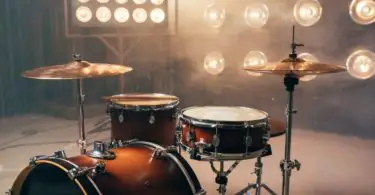

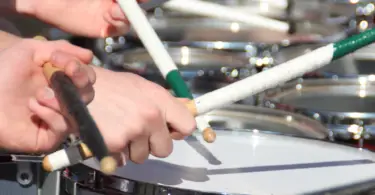
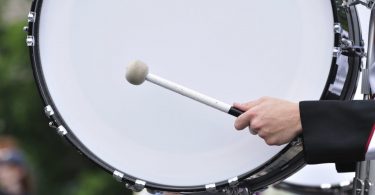
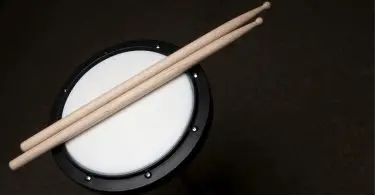
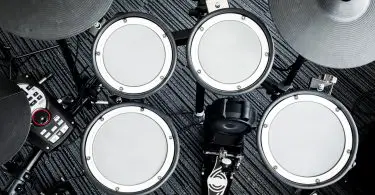
Start the discussion at talk.hearthemusicplay.com